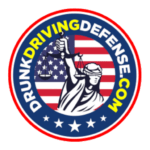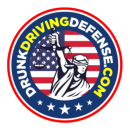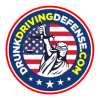Federal Conforming Products – Alcohol Screening Devices (2001)
[Federal Register: May 4, 2001 (Volume 66, Number 87)]
[Notices]
[Page 22639-22640]
From the Federal Register Online via GPO Access [wais.access.gpo.gov]
[DOCID:fr04my01-164]
———————————————————————–
DEPARTMENT OF TRANSPORTATION
National Highway Traffic Safety Administration
[Docket No. NHTSA-2001-9324]
Highway Safety Programs; Conforming Products List of Screening
Devices To Measure Alcohol in Bodily Fluids
AGENCY: National Highway Traffic Safety Administration, DOT.
ACTION: Notice.
———————————————————————–
SUMMARY: This notice amends the Conforming Products List (CPL) of devices that conform to the Model Specifications for Screening Devices
that Measure Alcohol in Bodily Fluids (59 FR 39382).
EFFECTIVE DATE: May 4, 2001.
FOR FURTHER INFORMATION CONTACT: Dr. James F. Frank, Office of Research and Traffic Records, Research and Evaluation Division (NTS-31), National Highway Traffic Safety Administration, 400 Seventh Street, SW., Washington, DC 20590; Telephone: (202) 366-5593.
SUPPLEMENTARY INFORMATION: On August 2, 1994, Model Specifications for Screening Devices to Measure Alcohol in Bodily Fluids were published in the Federal Register (59 FR 39382). In these model specifications, NHTSA recognized industry efforts to develop new technologies. These specifications established performance criteria and methods for testing alcohol screening devices using either breath or other bodily fluids to measure alcohol content. NHTSA established these specifications to support State laws that target youthful offenders (i.e., “zero tolerance” laws) and the Department of Transportation’s workplace alcohol testing program. NHTSA published its first CPL for screening devices on December 2, 1994 (59 FR 61923; with a correction in 59 FR 65128). Five devices were on that first list.
On August 15, 1995, NHTSA amended its CPL of screening devices to measure alcohol in bodily fluids in the Federal Register (60 FR 42214)
by adding two additional devices to the list, thereby bringing the list to seven devices.
Since the publication of that list, five additional devices have been evaluated at the Volpe National Transportation Systems Center in
Cambridge, MA and found to conform to the model specifications. Accordingly, these five devices, listed in alphabetical order, are
being added to the CPL. The first new listing is the “Alcohol TM” disposable breath alcohol tubes manufactured by Akers Laboratories,
Inc., of Thorofare, NJ. These are disposable tubes that use a potassium dichromate color change to indicate whether the BAC of a breath sample is above the 0.02 threshold. These devices passed all requirements of the model specifications except when read under sodium vapor lighting conditions. Hence, they are approved for use except under sodium vapor lighting conditions, and the manufacturer’s package insert specifies this limitation.
The second new listing is the Alco Check 9000 manufactured by Alco Check International of Hudsonville, MI. This device differs from the
Alco Check 3000 D.O.T. and the Alco Screen 3000 (the same device sold under two different names) in that it allows for the storage and
retrieval of test data by use of an added memory chip. As the Alco Check 3000 D.O.T. and the Alco Screen 3000 already conform to these
model specifications, and the added memory chip does not change the alcohol-measuring capability of the device, NHTSA did not require the
new Alco Check 9000 to be retested before listing it on this CPL for screening devices.
The third new device on the CPL is the ABI (Alcohol Breath Indicator) manufactured by HAN International Co. Ltd. of Seoul, Korea.
This is an electronic device with a two-digit numerical display that uses a semi-conductor sensor.
The last two devices are the “PAS IIIa” and the “PAS Vr” manufactured by PAS Systems International, Inc. of Fredericksburg, VA.
These are both electronic devices that use a fuel cell sensor with a two-digit numerical display. The PAS IIIa and PAS Vr are modifications
of two different passive alcohol sensors made by the same company, but with a disposable mouthpiece added so that an appropriate deep-lung air sample can be obtained for breath measurements.
Two housekeeping items are also addressed in this notice. First, the company previously listed as STC Diagnostics, Inc. has changed its
name to OraSure Technologies, Inc. and the new CPL reflects the inclusion of the new company name in addition to the old one. The name
of its product, the Q.E.D. A150 Saliva Alcohol Test, remains the same. Second, there are a number of handheld breath test devices on the NHTSA
CPL for Evidential Breath Testers that frequently are used as screening devices. It should be noted that any device on the most recent NHTSA
CPL for EBTs which was published on July 21, 2000 (65 FR 45419) that was tested against the 1993 Model Specifications for Evidential Breath
Testers (58 FR 48705) also fully meets the requirements of the Model Specifications for Screening Devices that Measure Alcohol in Bodily
Fluids. Both procedures evaluate the performance of instruments at the 0.020 BAC level.
The Conforming Products List is therefore amended as follows:
Conforming Products List of Alcohol Screening Devices
—————————————————————————————————————-
Manufacturer Device(s)
—————————————————————————————————————-
Akers Laboratories, Inc., Thorofare, NJ……. Alcohol TM \2\
Alco Check International\1\, Hudsonville, MI.. Alco Check 3000 D.O.T.
Alco Screen 3000
Alco Check 9000
Chematics, Inc., North Webster, IN………… ALCO-SCREEN 02TM \3\
Guth Laboratories, Inc., Harrisburg, PA……. Alco Tector Mark X
Mark X Alcohol Checker
Han International Co., Ltd., Seoul, Korea….. A.B.I. (Alcohol Breath Indicator)
OraSure Technologies, Inc., Bethlehem, PA Q.E.D. A150 Saliva Alcohol Test
(Formerly STC Technologies, Inc.).
PAS Systems International, Inc., PAS IIIa
Fredericksburg, VA. PAS Vr
Repco Marketing, Inc., Raleigh, NC………… Alco Tec III
Roche Diagnostic Systems, Branchburg, NJ…… On-Site Alcohol \4\
STC Technologies, Inc……………………. Q.E.D. A150 Saliva Alcohol Test
[[Page 22640]]
Sound Off, Inc.\1\, Hudsonville, MI……….. Digitox D.O.T.
Alco Screen 1000
—————————————————————————————————————-
\1\ The devices listed by these manufacturers are the same devices sold under diffreent names.
\2\ It should be noted that the Alcohol disposable breath alcohol screening device manufactured by
Akers Laboratories, Inc. passed the model specifications under all lighting conditions except one, namely
sodium vapor lighting. The device is being listed on this CPL with the understanding that the manufacturer
will specify in written instructions accompanying the product that the device should not be used under sodium
vapor lighting conditions. It passed the testing under all other conditions.
\3\ While the ALCO-SCREEN 02TM saliva-alcohol screening device manufactured by Chematics, Inc. passed the
requirements of the model specifications when tested at 40 deg.C (104 deg.F), the manufacturer has indicated
that the device cannot exceed storage temperatures of 27 deg.C (80 deg.F). Instructions to this effect are
stated on all packaging accompanying the device. Accordingly, the device should not be stored at temperatures
above 27 deg.C (80 deg.F) and, if the device is stored at or below 27 deg.C (80 deg.F) and used at higher
temperatures (i.e., within a minute), the devices met the model specifications and the results persisted for
10-15 minutes. When these devices were stored at or below 27 deg.C (80 deg.F) and were equilibrated at 40
deg.C (104 deg.F) for an hour prior to sample application, the devices failed to meet the model
specifications. Storage at temperatures above 27 deg.C (80 deg.F), for even brief periods of time, may result
in false negative readings.
\4\ While this device passed all of the requirements of the model specifications, readings should be taken only
after the time specified by the manufacturer. For valid readings, the user should follow the manufacturer’s
instructions. Readings should be taken one (1) minute after a sample is introduced at or above 30 deg.C (86
deg.F); readings should be taken after two (2) minutes at 18 deg.C-29 deg.C (64.4 deg.-84.2 deg.F); and
readings should be taken after five (5) minutes when testing at temperatures at or below 17 deg.C (62.6
deg.F). If the reading is taken before five (5) minutes has elapsed under the cold conditions, the user is
likely to obtain a reading that underestimates the actual saliva-alcohol level.
Note that the device made by Akers Laboratories, Inc. is a single-use, disposable breath test device. The devices manufactured by
Chematics, Inc., OraSure Technologies, Inc., Roche Diagnostic Systems,Inc., and STC Technologies, Inc. are all single-use, disposable saliva
alcohol test devices. The other devices listed are electronic breath testers. Those manufactured by PAS Systems International, Inc. use a
fuel-cell sensor, whereas those manufactured by Alco Check International, Guth Laboratories, Han International Co., Ltd., Repco
marketing, Inc., and Sound Off, Inc. use semi-conductor sensors.
Issued on: May 1, 2001.
Rose A. McMurray,
Associate Administrator for Traffic Safety Programs.
[FR Doc. 01-11318 Filed 5-3-01; 8:45 am]
BILLING CODE 4910-59-P
More Alcohol Breath Test Resources
If you’d like to learn more about DUI breath tests and breathalyzer machines, read through our helpful and informative articles on the topic below:
- DUI Breath Test Machines
- How Do I Blow Into a Breathalyzer?
- Can I Talk With My Attorney Before I Take a Breath Alcohol Test?
- How to Beat a DUI Breath Test
- Can Breathalyzer Results Be Challenged?
- Faulty Breath Machines and Missing Police Evidence
- Can I Get a DUI If I Refuse A Breathalyzer Test?
- DUI Breath Test Instruments (1995)
- Federal DUI Breath Test Devices Calibrating Regs (1997)
Find The Top-Rated DUI Lawyers Near You
We have listings for the top DUI lawyers in all 50 states and the District of Columbia. Find the best DUI lawyer for you by clicking on your state here.


